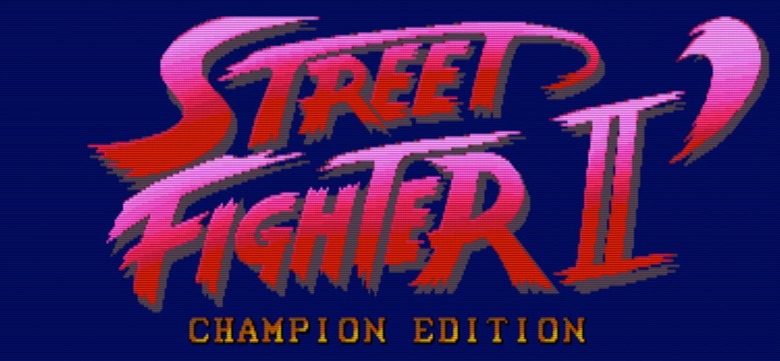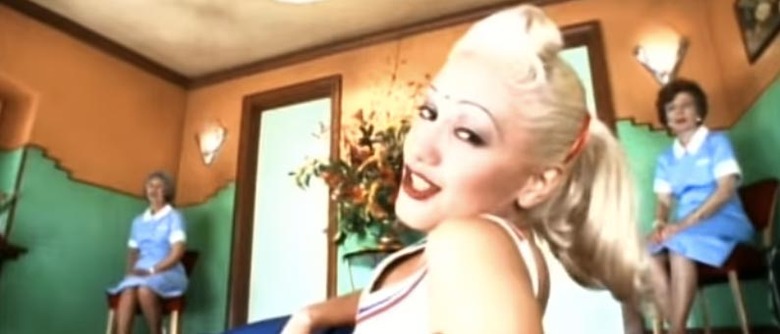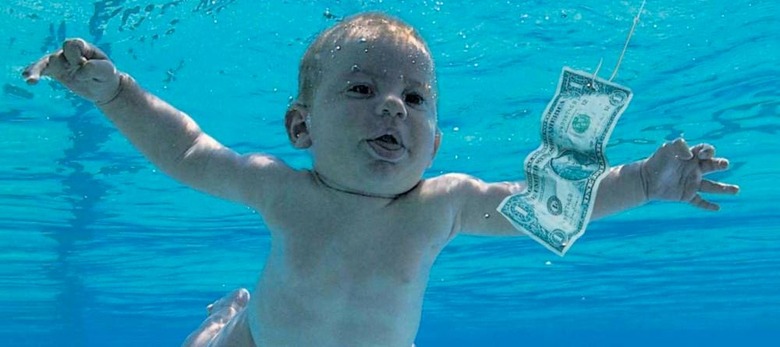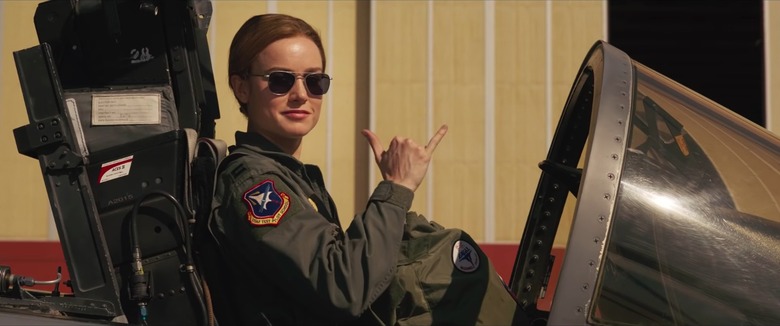'Captain Marvel's 90s Setting Gets Confusing Thanks To The Film's Soundtrack, Stan Lee's Cameo & More
Captain Marvel is the first movie in the Marvel Cinematic Universe set entirely in the 1990s. More specifically, thanks to certain revelations in the movie, both in the plot and background details, the movie takes place in 1995. That makes all those children of the '90s who now have kids of their own feeling nostalgic for Blockbuster Video, baggy flannel shirts, beepers, throwback radio hits, arcade games, and more. But the nostalgia for the decade is also creating some confusion within the realm of pop culture in the Marvel Cinematic Universe – especially when it comes to certain musical cues and Stan Lee's clever cameo.
So let's take a look at some of the more perplexing Captain Marvel 90s references below, but beware of spoilers.
Before we dig into this very nerdy nitpick of the '90s setting of Captain Marvel, we'd like to point out that this isn't our way of trying to tear apart the movie like Cinema Sins. These were just a handful of references that immediately set off an alarm in our brains based on when Captain Marvel is said to take place.
Many think the movie is supposed to be set in a more generic 1990-something, much like every episode of the ABC series The Goldbergs is set in "1980-something" and doesn't really adhere to the rules of chronological time when it comes to its pop culture references. But we'd like to point out that the specific 1995 setting reference comes from the fact that Carol Danvers disappeared in 1989, and it's said she's been gone for six years. So there you go.
Without further adieu, here are the Captain Marvel 90s references that confused us the most.
Street Fighter II
In Captain Marvel, Carol Danvers ends up in the local Pancho's Bar while trying to figure out some things about her past that keep messing with her mind. As she walks through the bar, she's hit with a swarm of memories in front of her, including one quick shot of her celebrating after winning a round on the Street Fighter II arcade game. However, there's a problem with that.
The Street Fighter II arcade cabinet wasn't released until 1991, two years after Carol Danvers was believed to be dead. So by the time Street Fighter II was released, Carol would have already been part of Starforce and therefore unable to play the game in the years before then. In fact, the cabinet shown in Captain Marvel is Street Fighter II: Champion Edition, which wasn't released until 1992.
No Doubt - "Just a Girl"
The popular '90s song "Just a Girl" by No Doubt makes a prominent appearance on the Captain Marvel soundtrack towards the end of the movie. The needle drop happens just as Carol Danvers starts kicking some serious Kree ass. It's a little bit of an obvious choice for a '90s song to use during that sequence, not to mention the fact that it kind of comes out of nowhere (even though there's a jukebox that gets knocked out of the way during the fight itself, and that could have easily explained where the song was coming from).
The problem with the use of this song is that it wasn't released until the fall of 1995. Sure, Captain Marvel takes place in 1995, so it's possible that it takes place at a time when the song would have been released. But we know that the movie has to take place before that because Mallrats was released in theaters in the fall of 1995. And Stan Lee is spotted on the train reading the script for Mallrats in preparation to shoot his cameo in the movie (we've got more on this below, because it creates even more confusion beyond this). So by the point this song would have been released, there's no way he'd be reading that script.
There's one explanation that makes perfect sense as to how this song is able to appear in the movie and not create any confusion. The use of "Just a Girl" is non-diagetic, meaning it doesn't play within the universe of the movie itself. That means the song doesn't explicitly need to have been released in order to be used. Perhaps that's why they didn't have the song emanate from the jukebox to begin with. But considering all the other '90s timeline issues, that doesn't seem likely. It seems to have been picked simply for its general '90s vibe, not unlike the use of the 1998 song "Celebrity Skin" by the band Hole in the film's closing credits.
But there is one song used in the movie that can't use that excuse, and thus makes no sense.
Nirvana - "Come As You Are"
Once Starforce arrives on Earth to "save" a stranded Carol Danvers, they capture her and hook her up to the Supreme Intelligence in an effort to dial back her powers and keep her psychologically restrained from using the full force of her superpowers. Inside Carol's mind, Supreme Intelligence (in the form of Annette Bening as Dr. Wendy Lawson, aka Mar-Vell) has a vinyl record of the Nirvana song "Come As You Are" playing. It's a way of trying to calm her so she can submit to Kree control again.
Here's the problem: "Come As You Are" was released on the Nirvana album Nevermind in 1992. Yes, that's years before the film's 1995 setting, so initially it seems like that song should work just fine. However, Carol Danvers has been gone since 1989. So unless the Kree have been tapping into the earthbound music trends of the 1990s this entire time, there's no reason for this song to be playing in her subconscious when she's hooked up to Supreme Intelligence. It's a cool musical cue, but it doesn't make sense in this scenario.
Stan Lee's Cameo and Mallrats
Initially, Stan Lee's cameo in Captain Marvel is a fun one with an amusing reference to the comic creator's cameo in Kevin Smith's sophomore directing effort Mallrats. As we've established, the movie was released in October of 1995, so that creates some timeline issues since Mallrats surely would have been done shooting by this point in order to be released by that time. But there are some bigger questions that come from this cameo, too.
When Stan Lee appears in Mallrats, it's as himself, the legendary creator of Marvel Comics characters like X-Men, Spider-Man, The Incredible Hulk, Fantastic Four, and more. All those characters are specifically referenced in the conversation Stan Lee has with the Mallrats character Brodie (Jason Lee), seen above. But how would the Stan Lee we know and love in the real world be nearly as famous for his comic book work when many of the superheroes he created shouldn't exist in the Marvel Cinematic Universe at this point?
The best explanation for this is that Stan Lee could easily be famous for creating other Marvel Comics characters who aren't part of the Marvel Cinematic Universe. X-Men and Fantastic Four specifically could easily still be comic book creations that everybody has loved for decades (though when those characters inevitable join the MCU, this could create some logistical problems). Perhaps Stan Lee even became famous for making comic books about the classic Captain America. But that would mean some of the comic book references in Mallrats shouldn't exist, and the movie would be somewhat different in the MCU.
This discrepancy also creates the larger issue of how movies that have superhero references in them would still exist in the Marvel Cinematic Universe if those comic book characters and their movies weren't around to be alluded to. (Example: Adventures in Babysitting references Thor, who hadn't become famous on Earth yet in the MCU.) It's entirely possible that these characters become famous once superheroes start rising to fame in the MCU (we've seen action figures and ice cream flavors based on these "real" superheroes pop up every now and then), and there might even be comics and movies about them in contemporary times. But since Iron Man doesn't show up until 2008, it's too early for that to be acceptable.
The Best Way to Explain All This
While there are valid logistical nitpicks to be made about these Captain Marvel 90s references, there's one easy way to explain this. Thanks to the events of the Marvel Cinematic Universe, it would be understandable if the timeline we know in the real world wasn't exactly the same in the MCU. As we've seen in time travel stories, if you go back in time and change one little thing in the past, it can have an impact on the entire timeline that follows. Therefore, since there's plenty that has happened in the MCU that isn't part of our real world, then maybe certain pop culture moments and creations happen earlier or later.
At the end of the day, this is a fictional universe, even if it pretends to take place in our real world and shares many of the same traits, especially in pop culture. And while it's fun to notice these details and try to make sense of them, it's hardly worth getting bent out of shape about.
***
Some of these nitpicks came from discussions between the /Film team, but others came from the stream of responses that /Filmcast host David Chen received on Twitter when he pointed out a couple '90s discrepancies that were brought up by reader/listener Paul Newton (@KneelBeforePaul on Twitter). Are there any other issues with the 1995 setting that you noticed?




